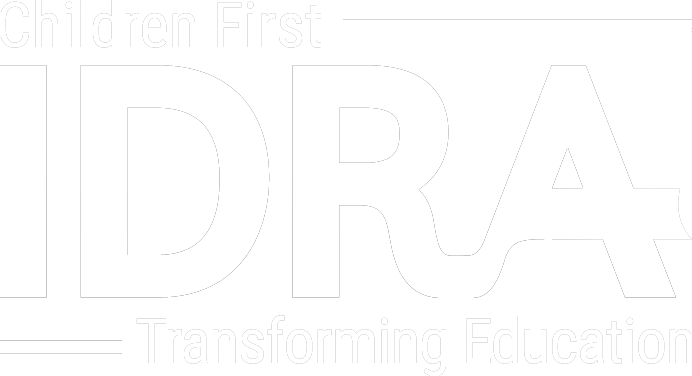• By Morgan Craven, J.D. • IDRA Newsletter • March 2025 • 
The U.S. Department of Education has several core functions: implement policies and support innovative research and programs that improve teaching and learning; collect data that give an accurate picture of student needs; protect the rights of all children by investigating potential violations and enforcing federal laws; and distribute targeted funding, particularly for programs designed to level the playing field for all children and ensure fair access to education.
While federal funding typically represents 10% to 15% of school funding for states, it is an important supplement for programs that serve students, including poor children, students with disabilities, and emergent bilingual students (English learners), among many others.
This funding need is especially true in states – like in many in the South – that have many rural communities, large numbers of children living in poverty, and lower levels of local and state funding. These states rely disproportionately on federal funding for schools compared to other states (NCES, 2023).
In Georgia, in fiscal year 2024, school districts across the state received the following.
- More than $610 million in federal Title I funds to close educational achievement gaps for more than 1 million students from families with limited incomes;
- $21.5 million in federal Title III funds to serve more than 65,000 English learners;
- More than $8.2 million to support rural education;
- $4 million for education for homeless children;
- More than $423 million in special education grants to serve 230,363 students with disabilities; and
- About $17 million in special education grants for infants and families (NCES, 2023).
This funding of over $1 billion supported 14,229 staff positions in K-12 schools.
In Texas, in fiscal year 2024, school districts across the state received the following.
- More than $1.8 billion in federal Title I funds to close educational achievement gaps for approximately 3.6 million students from families with limited incomes;
- Nearly $140 million in federal Title III funds to serve more than one million English learners;
- More than $21 million to support rural education;
- Nearly $13 million for education for homeless children;
- More than $1.2 billion in special education grants to serve 703,000 students with disabilities; and
- About $51 million in special education grants for infants and families (NCES, 2023).
The data are clear. Millions of students and public schools across the country benefit from federal funds and the coordinated oversight and protections the Department of Education is mandated to provide.
This funding of over $3.2 billion supported almost 53,000 staff positions in K-12 schools.
Threats to reduce this federal funding, shift it away from targeted programs, or send it to individual families in the form of private school vouchers would harm public schools, teachers and millions of students.
Unfortunately, these are all threats that have been made recently by the new administration. While signing the executive order to dismantle the U.S. Department of Education, President Trump announced that states would be handling much of the administration of federal programs, though he did not specify which funds would be shifted to states (Binkley & Megerian, 2025).
The administration announced that student loans and “special needs” funds for students will now be administered by the Small Business Administration and the Department of Health and Human Services, respectively (Cochran, 2025).
For more information about the amount of federal funding public schools receive, check out the resources below.
- American Federation for Teachers’ fact sheets on how education cuts will impact each state
- National Education Association’s federal funding guide tool
- Education Law Center’s federal education funding tracking tool by state
The data are clear. Millions of students and public schools across the country benefit from federal funds and the coordinated oversight and protections the Department of Education is mandated to provide. These major policy shifts are putting those students and schools in jeopardy.
Resources
Binkley, C., & Megerian, C. (March 20, 2025). Trump signs order for plan to shut down Education Department. Associated Press. PBS News.
Cochran, L. (March 21, 2025). Trump says student loans moving to SBA, ‘special needs’ to HHS. The Hill.
NCES. (2023). Table 235.20. Revenues for public elementary and secondary schools, by source of funds and state or jurisdiction: School year 2020-21. Digest of Education Statistics. National Center for Education Statistics.
Morgan Craven, J.D., is the IDRA national director of policy, advocacy and community engagement. Comments and questions may be directed to her via email at morgan.craven@idra.org.
[© 2025, IDRA. This article originally appeared in the March edition of the IDRA Newsletter. Permission to reproduce this article is granted provided the article is reprinted in its entirety and proper credit is given to IDRA and the author.]



